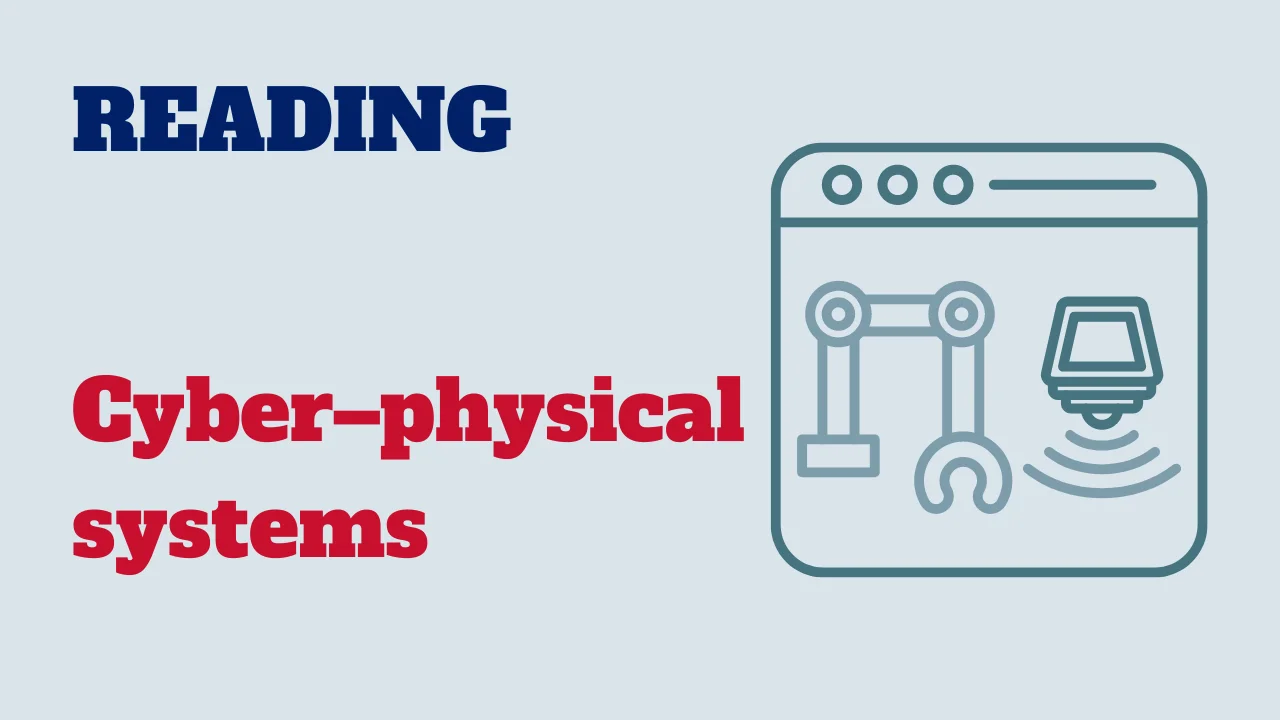This reading activity is about Cyber–Physical Systems (CPS). Cyber–Physical Systems represent the integration of computation with physical processes, where physical and software components interact deeply.

This reading explores the concept of CPS, its applications, and its potential in various domains, ranging from industrial control systems to healthcare monitoring.
Text: Cyber-physical system
Cyber-physical systems (CPS) integrate computational algorithms and physical processes through a network of interconnected components. These systems blend the physical world with digital control and are foundational to modern technological advancements in various fields such as smart grids, autonomous vehicles, and industrial automation.
Core concept:
CPS consist of embedded computers and networks that monitor and control physical processes, typically with feedback loops where physical processes affect computations and vice versa. The integration of cyber (computational) and physical (mechanical or electronic) components enables real-time interaction and dynamic adjustments. For instance, in an autonomous vehicle, sensors detect road conditions and obstacles, and the system processes this data to control braking, acceleration, and navigation.
Key components:
- Sensors and Actuators: Sensors gather real-time data from the physical environment, while actuators perform actions based on computational decisions, such as adjusting a machine’s position or controlling temperature.
- Computational Algorithms: These include the software and algorithms that process sensor data, make decisions, and generate control signals. They are responsible for tasks like data analysis, optimization, and predictive maintenance.
- Communication Networks: High-speed, reliable networks are crucial for CPS, ensuring seamless data exchange between sensors, actuators, and computational units. This connectivity allows for coordinated actions and system-wide optimization.
Applications:
CPS are pivotal in smart grids, where they manage energy distribution efficiently by balancing supply and demand in real-time. In autonomous vehicles, CPS enable self-driving capabilities by processing sensor inputs to navigate safely. Industrial automation utilizes CPS to monitor and control manufacturing processes, enhancing efficiency, precision, and safety.
Healthcare is another critical application, where CPS assist in robotic surgery, patient monitoring, and personalized medicine. Wearable devices, for example, can monitor vital signs and adjust treatments in real-time, improving patient outcomes.
Challenges and future directions:
Despite their potential, CPS face challenges such as ensuring security, reliability, and interoperability among diverse systems. The complexity of integrating cyber and physical components requires robust design and testing to prevent failures and vulnerabilities.
Looking forward, advancements in artificial intelligence and machine learning will enhance CPS capabilities, making systems more adaptive and autonomous. The evolution of 5G and beyond will further improve connectivity and real-time responsiveness, expanding the applications and impact of CPS in sectors like smart cities and precision agriculture.
In summary, cyber-physical systems represent a transformative technology that bridges the digital and physical worlds, driving innovation across industries. Their development and implementation are crucial for advancing efficiency, safety, and automation in an increasingly interconnected world.
Comprehension questions
Cyber–Physical Systems (CPS) represent a significant advancement in integrating computational elements with physical processes, enabling a wide range of applications across various domains. Understanding CPS and their potential benefits is crucial in harnessing their capabilities for solving complex challenges in areas such as healthcare, transportation, energy, and industry.



